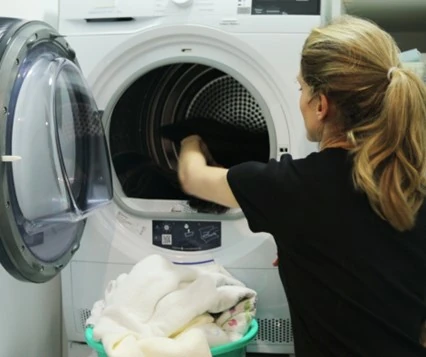How to Make Your Practice Environmentally Friendly
Tuesday, July 25, 2023, 03:15 PM
This blog was originally published on June 3, 2019. It has been revised to include new information and links.

As a holistic health practitioner, workplace responsibilities may demand more paper, water, and energy usage, so you may find it challenging to reduce your environmental footprint.
But, you have the unique opportunity to provide relaxation and healing to your clients while reducing your impact on the environment. You can create a sustainable and environmentally conscious workplace by adopting climate-friendly practices.
Here are five ways for holistic health practitioners to promote a greener approach to wellness:
Conserve Water
Water conservation is crucial in any sustainable practice. It's no secret that laundry is part of every holistic health practice, regardless of the environment you work in. Cleaning and sanitizing your treatment area and supplies is essential.
Here are some ways to reduce water when doing laundry:
- Use high-efficiency machines: invest in high-efficiency washing machines that use less water per load than older models.
- Full loads only: as much as possible, wait until you have a full load of linens and towels before running the washing machine.
- Pre-soaking and spot cleaning: if possible, pre-soak heavily soiled linens and towels to loosen dirt and oils. Spot clean stains beforehand — this reduces the need for extra wash cycles.
- Use high spin speed: opt for higher spin speeds during the washing cycle. This helps extract more water from the linens and towels, reducing drying time and overall water waste associated with machine drying.
Go Paperless
In today's digital world, integrating technology into your practice can bring a number of benefits to your business and the environment. Going digital can streamline your operations and enhance client experiences.
Here are a few ways to digitally transform your practice:
- Online booking and scheduling: use an online booking system to allow clients to schedule appointments conveniently, reducing the need for paper-based notes or phone calls.
- Electronic documentation: digitally store client intake forms, health histories, and treatment notes. Electronic documentation also improves the organization, accessibility, and security of sensitive client information.
- Digital payment systems: switch to online invoicing or mobile payment applications to reduce the need for paper receipts and cheques.
- Digital marketing and communication: market your practice and communicate with clients using digital platforms (e.g., website, social media, email, etc.). This reduces reliance on print advertising such as brochures, posters, magazines, coupons, and flyers.
NHPC members receive discounts on digital booking systems, SOAP notes, online payment systems, and marketing solutions as part of their membership.
Opt for Energy Efficiency
Being mindful of energy usage can lower environmental impact and reduce utility costs. You can reduce your energy by using energy-efficient lighting.
Replace traditional incandescent and CFL bulbs with energy-efficient LED lights (PDF), which use significantly less energy and have a longer lifespan, reducing the need for frequent replacement.
In addition to LED lights, consider using programmable or smart thermostats to adjust the temperature based on occupancy and time of day.
Natural ventilation is also a great option. When weather permits, open windows for natural ventilation instead of relying solely on air conditioning or fans.
Being energy efficient can be as simple as turning off lights in rooms that are not being used and unplugging electronic devices and chargers when not in use. Even in standby mode, many devices consume small amounts of electricity known as "phantom" or "vampire" energy.
Embrace Eco-Conscious Products
Choosing massage oils, lotions, and other products made from organic or natural ingredients is an essential step toward sustainability. Look for cruelty-free, sustainably sourced products.
Another great way to reduce ecological footprint is to support local and small businesses.
NHPC members can access multiple small businesses through our Discount Provider Program that carry essential products for therapists, like oils, lotions, sprays, tables, linens, and much more. Supporting local businesses reduces the impacts of shipping and transportation and fosters sustainable community development.
Recycle
Make recycling a priority in your practice by setting up designated bins for paper, plastic, and glass waste. Familiarize yourself with local recycling guidelines to understand which materials are accepted for recycling in your area.
Place clearly labelled recycling bins in accessible areas of your practice, such as the waiting area, treatment rooms, and break room. Inform clients and staff about the recycling program and what materials can be recycled.

Avoid contamination as much as possible by ensuring that recyclables are clean and free of food residue or other contaminants. Contaminated items may cause the entire recycling batch to be rejected.
Let's Work Together!
Simple yet effective practices like choosing eco-conscious products, supporting local businesses, conserving water, and recycling can significantly impact the environment and set an example for others to follow.
We all have to work together towards a more sustainable and eco-conscious future. Our commitment to sustainability does not end within our practice walls.
Join us in educating our clients and colleagues about eco-friendly choices. As an association, we can foster a community of environmentally responsible individuals who embrace sustainability daily.

